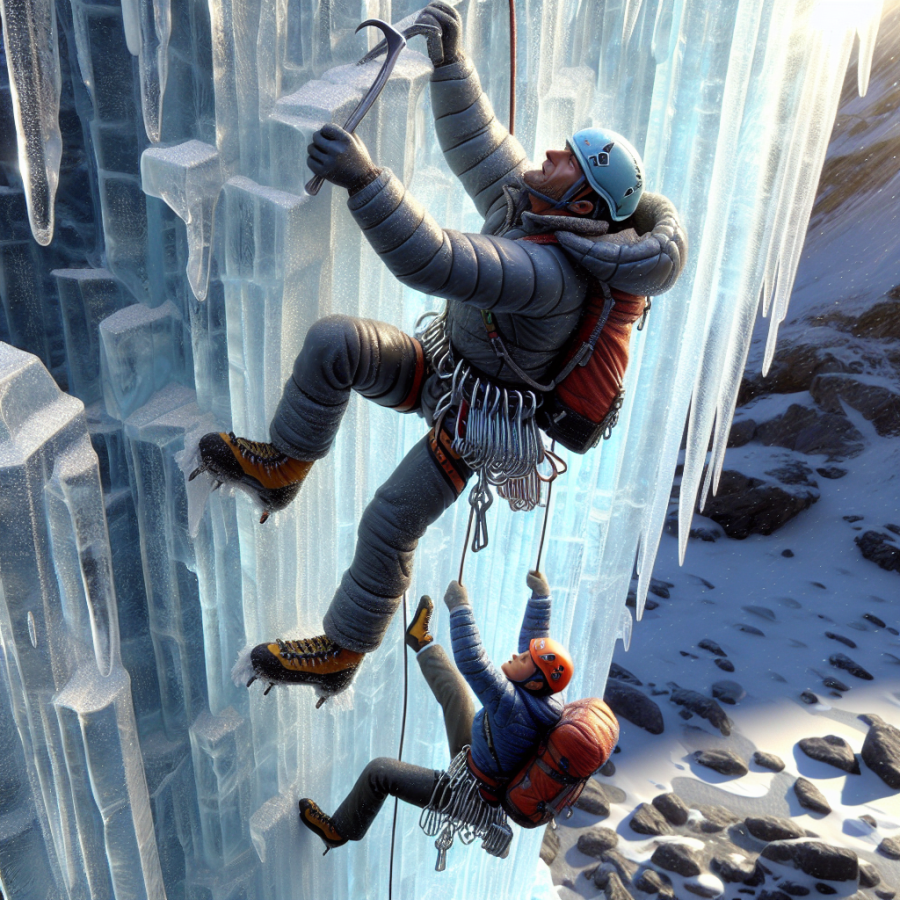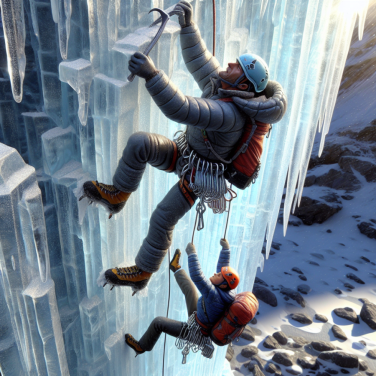Ascending the Icy Giants: Techniques and Triumphs in Ice Climbing
Ascending the icy giants of the natural world is not just about strength and endurance; it involves an intricate blend of skill, mental fortitude, and a profound appreciation for the raw beauty of the vertical realms of ice. Ice climbing, a discipline of mountaineering, challenges adventurers to scale frozen waterfalls, cliffs adorned with ice, and ice-covered rock slabs. This endeavor demands a unique set of techniques, as well as specialized gear, to ensure both success and safety.
Before setting foot on the ice, climbers must perfect their technical know-how. Top-rope climbing is often the first step for novices, providing a more controlled environment to hone skills. As one progresses, the transition to lead climbing introduces the critical task of placing ice screws for protection. Climbing in a team, communication becomes essential for efficiency and safety, with each climber playing a crucial role.
Footwork in ice climbing is paramount. The technique involves deliberate and precise kicking to plant the front points of crampons into the ice. Mastering this requires practice and finesse to prevent excessive fatigue. Balancing the body's weight is equally important, as it allows the sharp points of the crampons to anchor securely and support the climber's ascent.
Tool placement is another critical skill. Climbers wield ice axes with an expert subtlety, swinging them overhead to bite into the ice. The goal is to achieve a solid stick with minimal effort, judged by the sound and the feel of the ice tool's interaction with the ice. A stable placement means the climber can trust their weight on the tool while moving upwards.
Managing the cold environment is a triumph in itself. Climbers must dress in layers to regulate body temperature, balancing the need to stay warm without overheating during exertion. Frostbite is a real danger, hence the importance of proper insulation for both hands and feet.
Perhaps one of the most exhilarating aspects of ice climbing is the formation of ice itself. Each climb is unique due to the ever-changing state of the ice. Variables such as temperature, water flow, and even sunlight can affect the conditions, transforming the climb from one day to the next. This makes ice climbing a dynamic experience, as climbers must read and interpret the ice, predicting secure holds and the potential for ice fractures.
The triumphs of ice climbing are woven into the stories of climbers who surmount these frozen behemoths. Some speak of the adrenaline rush when they first top out on a daunting multi-pitch route.
Read also:
Chopping to the Top: Stihl Timbersports Thrills
Embracing the Chill: Mastering the Art of Ice Climbing
Embracing the Chill: Mastering the Art of Ice Climbing is a journey that begins with understanding the unique challenges and allure of scaling frozen waterfalls, cliffs layered with hoar frost, and ice-covered rock faces. Unlike traditional rock climbing, ice climbing demands not only physical strength and precise technique but also dedication to learning the intricacies of the icy domain.
To become proficient in ice climbing, one must start by acquiring the right equipment. The essentials include ice axes, crampons, helmets, harnesses, and ropes specifically designed for the cold and slippery conditions. Selecting the appropriate gear is crucial, as it must withstand the extreme cold and provide reliable performance on ice. Climbers should also invest in specialized boots that offer both warmth and rigid support for effective crampon use.
Once properly equipped, the next step is mastering the use of this gear. This involves learning the swing of the ice axe for secure placement, as well as the precise footwork needed for crampon techniques, such as front-pointing, where the front spikes are used to gain traction on the ice. Correct body positioning and balance are vital to preserve energy and maintain stability on the vertical ice.
Understanding ice conditions is imperative. Ice can vary widely from one climb to the next, affected by temperature, sun exposure, and the presence of water. Novices must learn to differentiate between various types of ice, such as alpine ice found on mountains, water ice from frozen waterfalls, and mixed conditions that combine ice with rock. Each presents its own set of challenges and requires specific strategies for successful ascent.
Mental preparation is as important as physical readiness. Ice climbers must cultivate the mental fortitude to cope with the demanding environment and potential hazards such as falling ice or unexpected changes in weather. This includes developing risk assessment skills to make informed decisions on whether to proceed with a climb or retreat.
Training and physical conditioning can't be overlooked. Core strength, flexibility, and endurance are critical, as ice climbing often involves contorting the body into unusual positions and holding them for extended periods. Climbers must engage in regular workouts that target these areas, alongside practice sessions at local ice climbing venues or indoor ice climbing walls.
Furthermore, to truly master the art of ice climbing, climbers should seek instruction from experienced mentors and participate in workshops and courses. These provide valuable insights into advanced techniques, safety protocols, and rescue procedures.




